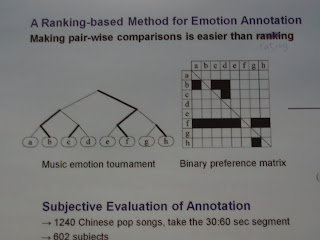
This is a plug for Emiru Tsunoo's paper titled "Rhythm Map: Extraction of Unit Rhythmic Patterns and Alanysis of Rhythmic Structure from Music Acoustic Signals." I've read the paper and it's very good work. I like the search for new and better features.
 Emiru presenting his poster. He was crowded the entire time.
Emiru presenting his poster. He was crowded the entire time. Dr. Sagayama explaining RhythmMap to Malcolm Slaney of Yahoo! and Stanford.
Dr. Sagayama explaining RhythmMap to Malcolm Slaney of Yahoo! and Stanford.













No comments:
Post a Comment